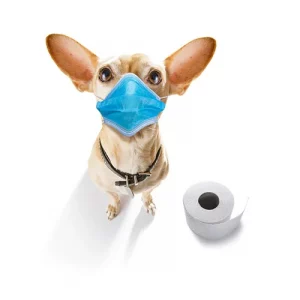How to Treat Parvo in Dogs

Much like humans, dogs are susceptible to a wide range of different diseases and viruses. Some of them are deadly when left untreated, and sadly parvo in dogs is quite common.
So, as a conscientious pet owner, you will want to know how to spot the disease and infection in your dog early on. One of the most highly-contagious viruses dogs have to contend against is commonly known as parvo (Canine Parvovirus or CPV).
This DNA virus was first discovered in 1967 and has rapidly become a serious threat to canine health. While canine parvovirus is not airborne, it can be found on many surfaces within the environment. It is spread orally by contact with contaminated feces.
When this virus infects the bone marrow, it attacks the young immune cells, reducing the amount of protective white blood cells. This weakens the body’s immune system, the ability to protect itself, and allows the virus to more easily invade the gastrointestinal (GI) tract. This is unfortunately where the worst damage happens.
While treatment options are available, the best way to ensure your dog survives the disease is by preventing it in the first place. However, life happens, and you can’t control everything your pet does every moment of the day. So if your dog already has parvo, you need to educate yourself about treating it properly and immediately.
How Does a Dog Contract Parvo?

As stated earlier, dogs contract the parvovirus through the mouth. There are places where dogs have a higher chance of contracting the disease compared to others.
Some of those places include:
- Apartment Complexes
- Municipal Parks
- Dog Parks
- And More…
Look at this article by Advanced Animal Care to find out more about familiar places dogs can contract parvo. When it comes to treating the virus, there are several options.
Oral medications and IV fluids are two of the primary treatments for parvo. In some instances, tube feeding and injectable medicines are used to treat the virus. An interesting thing to note is that certain dog breeds are at increased risk of contracting parvo.
Here are some dog breeds with a high susceptibility to parvo:
- German Shepards
- American Staffordshire
- English Spaniels
- Doberman Pinschers
You can check out this article by AKC to learn more about particular dog breeds with higher odds of catching parvo.
Curative Treatments for Parvo in Dogs
Parvo does not have a cure at the moment. Veterinarians can only provide intermittent treatment for parvo. Since it’s a virus, your dog may catch it again after getting through its first infection.
With an aggressive treatment approach, the great news is that the survival rate of parvo can reach 91%. To get the best outcome after your dog catches parvo, you need to contact a reliable veterinarian clinic. Santa Cruz Pet Clinic offers reliable and effective parvo treatment services. Backed by years of experience.
You should always take your pet to a reputable clinic like Santa Cruz Pet Clinic when you notice your dog displaying the signs of parvo.
Parvo has many signs and symptoms. Common symptoms of parvo include:
- Fever
- Loss of Appetite
- Lethargy
- Vomiting
FAQ: Parvo in Dogs

How Does a Dog Get Parvo?
Parvo enters the canine system via the mouth. This can occur when your dog eats off the floor or cleans itself. It’s commonly spread from dog to dog.
How Do You Treat Parvo in Dogs?
There are several treatments for parvo in dogs. The most common ones include controlling your dog’s nausea, keeping them hydrated, and reducing bacterial infections when possible.
Can a Dog with Parvo Survive?
According to reputable veterinarians who have treated the condition, the survival rate of parvo in dogs is 68% – 92%. While your dog can survive, you must catch the disease early in its progression.
Contact Asavet Charities
If you suspect your pet is suffering from parvo, contact Asavet Charities immediately to find treatment solutions. The faster you act, the higher the odds are of your dog surviving. Protect your dog’s safety and health by using all of the tips we’ve included in this article. You may also enjoy reading this related article:
